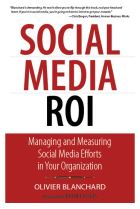Finding the right path for your company in the world of social media isn’t as hard as you might think.
Some companies have a very clear, obvious path in social media. Starbucks and Coca Cola, for example, had massive existing communities of fans who flocked to their social media platforms with very little prodding. For other companies, especially those in industries that are more obscure and less high-profile to the public, their path can lie hidden from view like the lost city of Machu Picchu. But just like that lost city was found back in 1911, the path can indeed be discovered for any business, even those that the general public has never heard of.
Regardless of what company you work for, what industry you are in, or what product or service you sell, there are several steps that you can use to uncover your path to success in social communications. It just won’t end up being the same as the path someone else takes.
We may not all use social communications in the same way, and that’s part of the beauty of these new platforms. Social communications are what you make of them, and by trying to ‘copy’ what another is doing instead of finding your company’s own unique approach, you’re really missing out on the true power of these new tools. The real power comes from unlocking the special knowledge and skills that are inherent in your company, and using those to your advantage to give your community something they can’t get anywhere else.
In an email exchange with one of my Twitter friends, @pegfitzpatrick, we discussed how B2B companies who participate in essential, albeit somewhat less public-facing industries, could participate in social communications in a way that provides real ROI and competitive advantage.
To give you an idea of what I mean by ‘less public-facing’ industries: Peg is the Director of Marketing at a multinational company that produces a variety of chemicals used in the dry cleaning industry. I am the Marketing Manager at a company that produces paint finishing equipment for the automotive, aerospace, and manufacturing sectors. Neither of these is what you’d call a ‘high-profile’ public-facing industry, yet we’ve both seen significant beneficial impact from social communication activities.
There are a few simple steps that any company in any industry can use to build a thriving social media presence. Here they are:

1 – Identify what’s already happening out there: Before you begin, it’s wise to scan the landscape for any clues that already exist to determine how you should proceed. Using tools like Social Mention, you can scan the web for any mentions of keywords, brand names, or product names from your company or others in your industry. By determining where the conversations are happening, what people are saying, and who they’re saying it to, you can begin to figure out how you should be communicating with them, and where.
2 – Determine the inherent social value in your organization: There are three things that create an incentive to follow a company in social media. I like to call them the Three E’s:
• Education – ex: Teach them something new, helpful advice, tips & tricks, etc.
• Entertainment – ex: Make them laugh or think ‘WOW, that is cool!’
• Exclusives – ex: Give special offers they can’t get through any other channel.
If you’re able to provide all three, there will be no stopping you. But you need to provide at least one of them. Think about your company, think about the expertise your company has, think about the people in your company, the personality of your company, and the nature of your customers. Use these to determine which of these categories best suits your resources.
3 – Choose a small handful of channels first, then expand: Every social media channel uses a different format. Some are similar, but there are always differences. Based on where your existing communities are, and what kind of content your organization is best suited to sharing, choose the channel that best fits with these two factors. Once you’ve determined this primary channel, choose one or two ‘complementary’ channels that tie in to it. The idea is to keep things simple to avoid being spread too thin, but to also begin building communities in a variety of locations to connect with different kinds of influencers.

4 – Share as often as you can, but do it CONSISTENTLY: Your community will quickly become accustomed to the pace with which you share content. If you start posting blog posts every week, tweeting 20 times a day, and posting a new gallery of images to Facebook every few days, you have to make sure you have the resources to maintain that stream of content. It’s far better to start out at a walking pace and build up to a jog than it is to go full-speed out of the gate. This is a marathon, not a sprint. By being regular and consistent with your content, you develop a routine with your communities. If they know when to expect new stuff, they’ll check back far more regularly than if it’s inconsistent and hard to predict.

5 – Identify who possesses the social skill set in your organization: All too often, companies focus too much on the ‘what’ and the ‘where’ of social media and not enough on the ‘who’. Just like it is essential to identify who your community is, it is also necessary to identify the best person(s) inside your organization to interact with those communities. Social media success hinges on the personality of the people participating in it, so take a good long look at the people you have and figure out who the most ‘social’ among them is. Remember that this person will become the face of your brand in the social space, so choose someone who’s dedicated, professional, knowledgeable, and most importantly WANTS to do this. Their desire to connect with the community is just as important as their technical knowledge.
In summary, what you do should be determined by the nature of your company and the nature of your customers. Don’t try to copy someone elses approach. Every company has strength, and a personality that can be highlighted by social communications. it is that personality that helps you effectively build your community. The direction that you need to take is already set before you. You just need to travel down that path one step at a time.
This article originally written for http://crowdshifter.com
{EAV_BLOG_VER:9ff538d723fb8ee4}




















![Reaching 200 Million Accounts: Twitters Explosive Growth [INFOGRAPHIC]](http://mashable.com/wp-content/uploads/2011/07/twitter-evolution-360.jpg)






